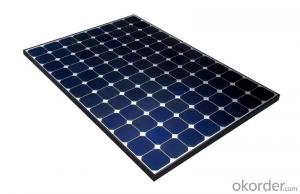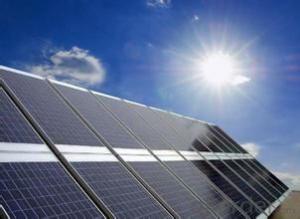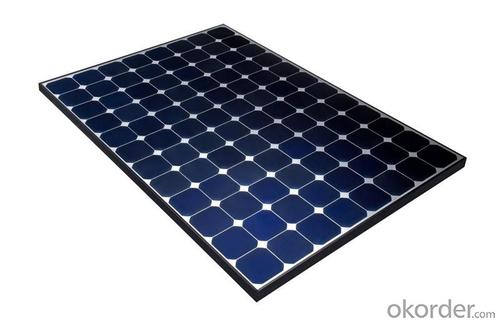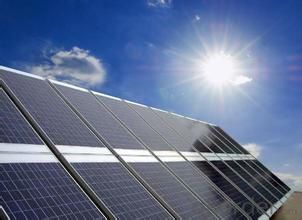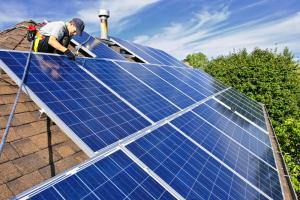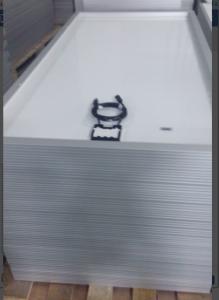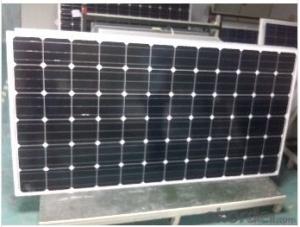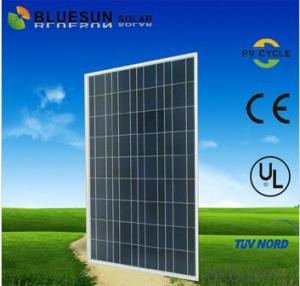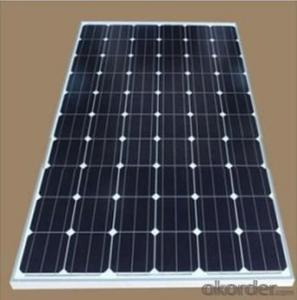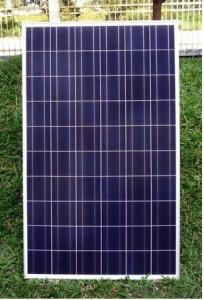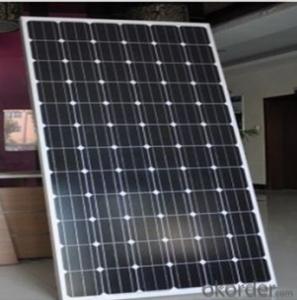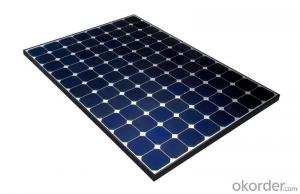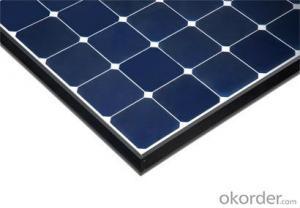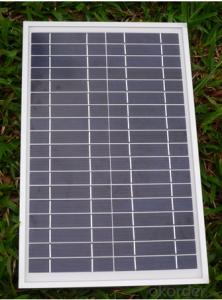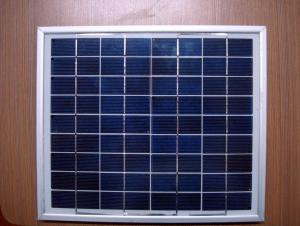Solar Panels in Colorado:Poly Solar Panel 320W B Grade with Cheapest Price
- Loading Port:
- Shanghai
- Payment Terms:
- TT OR LC
- Min Order Qty:
- 500 watt
- Supply Capability:
- 10000 watt/month
OKorder Service Pledge
OKorder Financial Service
You Might Also Like
Specification
Poly Solar Panel 320W B Grade with Cheapest Price
Product description
A solar cell, or photovoltaic cell (in very early days also termed "solar battery"[1] – a denotation which nowadays has a totally different meaning, see here), is an electrical device that converts the energy of lightdirectly into electricity by the photovoltaic effect, which is a physical and chemical phenomenon.
A solar cell, or photovoltaic cell (in very early days also termed "solar battery"[1] – a denotation which nowadays has a totally different meaning, see here), is an electrical device that converts the energy of lightdirectly into electricity by the photovoltaic effect.
In contrast, a solar thermal collector supplies heat by absorbing sunlight, for the purpose of either direct heating or indirect electrical power generation from heat. A "photoelectrolytic cell" (photoelectrochemical cell), on the other hand, refers either to a type of photovoltaic cell (like that developed by Edmond Becquerel and modern dye-sensitized solar cells), or to a device that splits water directly into hydrogen and oxygen using only solar illumination.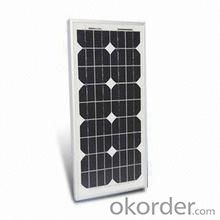
Application
Business
Home
Industry
Large project
Feature
1. A grade high efficiency solar cells.
2.TUV/UL/CE/CEC etc
3.Fast shippment
4.25 years warranty
5.OEM/ODM
Packaging
28pcs into one carton
Shipping
Material in stock can be produced (procedure 5-20days) right away after pre-payment confirmation. COSCO Mearsk MSCship to worldwide for safe shipping, don't worry about package damage or loss. It takes about 15-40 days to worldwide, Please note us your contact details include your phone number for easy contacting from shipping company officer.
- Q: Making a solar panelI know there was a recommended wattage for the soldering iron but i cant rememberdoes anyone know?
- Temperature controlled soldering irons like Weller are best. They don't burn up if left turned on.
- Q: If one buys tons of solar panels and sells electricity(possible in my country) can he earn money ?
- Solar panels are very effective ways to collect, store, and use energy. However at this time they still are not incredibly cost effective. People scream and shout about being green, however being green needs to be practical. If an electric bill costs triple what you pay now just for being green that seems like crap to me. It kind of reminds me of organic food. (If labeled organic and 99 cent item costs 5 bucks.) The sad thing is if only solar panels were massed produced they could be a method for collection of electricity. However currently they are only used either for demonstration purposes or scientific use. Mankind way of thinking about energy needs to change before this can be seriously seen as a method of energy.
- Q: i have a 2v 2a solar panel that i want to use to charge a 2v battery .Have found out that i need a charge controller so i don't over charge the battery.I have found a cheep one its 2v but 7a will it still work ?All-so im planing on running a 2v water pump off the battery with a timer,its for watering my garden.Will the timer have to be 2v as well ?any help on this would be greatly appreciated thanks .
- The charger will accept whatever current is necessary from the solar panel up to 7A. It's not like the solar panel will force 2amps into the charger/battery -- the charger will control the current going to the battery. I question whether or not the 2V panel will actually charge the battery, though, because in order to charge a standard lead-acid 2V battery you need to have about 4.5 volts applied to the terminals. Perhaps the charger has a boost circuit -- I don't know without looking at it or knowing the brand/model number, etc. The timer must be 2VDC, but, if you only have a timer that is rated for 20VAC, you can buy a small inverter that will take 2V and supply the necessary 20VAC. An inverter rated for 20 to 50 Watts should be sufficient. These usually cost under US$25. .
- Q: Can solar panels be installed on desalination plants?
- Yes, solar panels can be installed on desalination plants.
- Q: I know that the Solar panels store the power from the sun in the daytime, where does that stored energy go from there? Is it stored in the batteries? And how would you keep the batteries topped up if you had no Electric? by a generator? interested in solar panels for abroad, but need more info.
- Solar panels do not store power. Solar panels convert sunlight into electricity. To store power you need batteries. The usual type of batteries used are lead-acid deep discharge( similar to car batteries). The batteries are charged up during the time the sun is out. However, as a backup you could also have a generator handy to provide power for times when the sun did not shine enough to keep the batteries charged up.
- Q: Can solar panels be installed on a convention center or event venue?
- Yes, solar panels can be installed on a convention center or event venue. In fact, many convention centers and event venues are embracing renewable energy solutions, including solar power, to reduce their carbon footprint and lower electricity costs. Installing solar panels can provide a reliable and sustainable source of energy, making it an ideal choice for these large-scale facilities.
- Q: Can solar panels be used for powering agricultural equipment?
- Yes, solar panels can be used for powering agricultural equipment. Solar energy can be converted into electricity, which can then be used to power various agricultural machinery and equipment such as pumps, irrigation systems, electric fences, and even small tractors. This helps reduce reliance on traditional fossil fuels, promotes sustainable farming practices, and can save farmers money in the long run.
- Q: Are solar panels noisy?
- No, solar panels are not noisy. They do not have any moving parts and therefore, do not produce any noise while generating electricity from the sun.
- Q: I have two solar panels and I have measured that they produce V by themselves. I am trying to generate .5V, but whenever I hook them up in parallel I get something like .02V. What it happening?
- You are probably wiring them incorrectly: with the positive on panel A connected to negative on panel B; and the negative on panel A connected to the positive on panel B. If you want then connected in parallel, connect the positive on panel A to the positive on panel B and the negative on panel A connected to the negative on panel B. But you will only get vdc. You can't get .5 volts from two volt sources. You can get 2 volts by connecting the panels in series.
- Q: My dad owns a restaurant, and we are doing farely well, but we were thinking on installing solar panels to minimize electricity costs (and of course make it greener). My dad would like to hear some numbers on the price in today (August 29/202) and savings he could possibly make over the years. So In Total Here's What I'm Asking:) Would it be hard to install?2) Maintanence?3) Monthly Expense? (None?)4) Price?5) Savings over time?6) Pros/ConsThank you so much!
- Different solar companies install these panels. Check your local area for a free quote. If you don't already have a solar panels for a hot water system yet, consider a thermosiphon design, then you need no electricity to produce hot water. All the other designs require some electricity.
Send your message to us
Solar Panels in Colorado:Poly Solar Panel 320W B Grade with Cheapest Price
- Loading Port:
- Shanghai
- Payment Terms:
- TT OR LC
- Min Order Qty:
- 500 watt
- Supply Capability:
- 10000 watt/month
OKorder Service Pledge
OKorder Financial Service
Similar products
Hot products
Hot Searches
Related keywords
